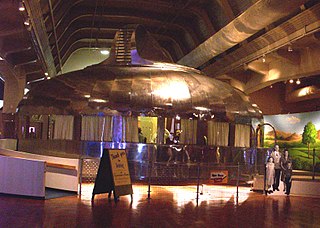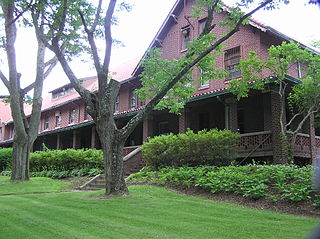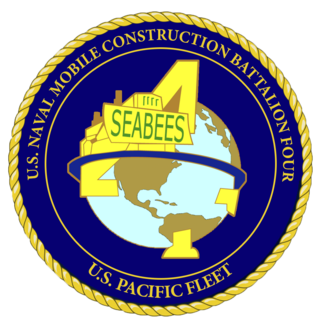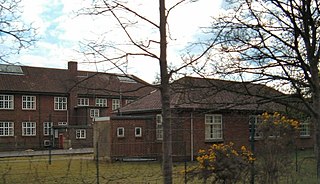
Richard Buckminster Fuller was an American architect, systems theorist, writer, designer, inventor, philosopher, and futurist. He styled his name as R. Buckminster Fuller in his writings, publishing more than 30 books and coining or popularizing such terms as "Spaceship Earth", "Dymaxion", "ephemeralization", "synergetics", and "tensegrity".

A geodesic dome is a hemispherical thin-shell structure (lattice-shell) based on a geodesic polyhedron. The triangular elements of the dome are structurally rigid and distribute the structural stress throughout the structure, making geodesic domes able to withstand very heavy loads for their size.

The Dymaxion House was developed by inventor and architect Buckminster Fuller to address several perceived shortcomings with existing homebuilding techniques. Fuller designed several versions of the house at different times — all of them factory manufactured kits, assembled on site, intended to be suitable for any site or environment and to use resources efficiently. A key design consideration was ease of shipment and assembly.

The Dymaxion map or Fuller map is a projection of a world map onto the surface of an icosahedron, which can be unfolded and flattened to two dimensions. The flat map is heavily interrupted in order to preserve shapes and sizes.

The Dymaxion car was designed by American inventor Buckminster Fuller during the Great Depression and featured prominently at Chicago's 1933/1934 World's Fair. Fuller built three experimental prototypes with naval architect Starling Burgess – using donated money as well as a family inheritance – to explore not an automobile per se, but the 'ground-taxiing phase' of a vehicle that might one day be designed to fly, land and drive – an "Omni-Medium Transport". Fuller associated the word Dymaxion with much of his work, a portmanteau of the words dynamic, maximum, and tension, to summarize his goal to do more with less.

Concertina wire or Dannert wire is a type of barbed wire or razor wire that is formed in large coils which can be expanded like a concertina. In conjunction with plain barbed wire and steel pickets, it is most often used to form military-style wire obstacles. It is also used in non-military settings, such as when used in prison barriers, detention camps, riot control, or at international borders. During World War I, soldiers manufactured concertina wire themselves, using ordinary barbed wire. Today, it is factory made.

A Nissen hut is a prefabricated steel structure for military use, especially as barracks, made from a half-cylindrical skin of corrugated iron. Designed during the First World War by the American-born, Canadian-British engineer and inventor Major Peter Norman Nissen, it was used also extensively during the Second World War, being adapted as the similar Quonset hut in the United States.
DDU, Ddu, DdU, D.D.U., or D.D.U may refer to:

A Quonset hut is a lightweight prefabricated structure of corrugated galvanized steel having a semi cylindrical cross-section. The design was developed in the United States, based on the Nissen hut introduced by the British during World War I. Hundreds of thousands were produced during World War II and military surplus was sold to the public. The name comes from the site of their first deployment at Quonset Point at the Davisville Naval Construction Battalion Center in Davisville, Rhode Island.

The Stout Scarab is a streamlined 1930–1940s American car, designed by William Bushnell Stout and manufactured by Stout Engineering Laboratories and later by Stout Motor Car Company of Detroit, Michigan.

Camp Evans Historic District is an area of the Camp Evans Formerly Used Defense Site in Wall Township, New Jersey. The site of the military installation is noted for a 1914 transatlantic radio receiver and various World War II/Cold War laboratories of the United States Army. It was designated a National Historic Landmark District in 2012, in recognition of the site's long role in the development of modern civilian and military electronic communications.

Royal Air Force Hethel or more simply RAF Hethel is a former Royal Air Force station which was used by both the United States Army Air Forces (USAAF) and the Royal Air Force (RAF) during the Second World War. The airfield is located 7 miles (11 km) south west of Norwich, Norfolk, England and is now owned by Lotus Cars.
The Bellman Hangar was designed in the United Kingdom in 1936 by the Directorate of Works structural engineer, N. S. Bellman, as a temporary aircraft hangar capable of being erected or dismantled by unskilled labour with simple equipment and to be easily transportable. Commercial manufacturing rights were acquired by Head Wrightson & Co of Teesdale Iron Works, Thornaby-on-Tees. By November 1938, 10 had even been supplied to Russia.

The 116th Air Refueling Squadron is a unit of the Washington Air National Guard 141st Air Refueling Wing located at Fairchild Air Force Base, Spokane, Washington. The 116th is equipped with the KC-135R Stratotanker and RC-26B Metroliner.

Naval Mobile Construction Battalion 4 is a Navy Seabee battalion homeported at Port Hueneme, California. Nicknamed the "Pioneers", it is the first of the many CBs created after the original three. The Battalion's current insignia first appeared on its 1953–55 cruisebook.

The Jamesway hut is a portable and easy-to-assemble hut, designed for polar weather conditions. This version of the Quonset hut was created by James Manufacturing Company of Fort Atkinson, Wisconsin. A Jamesway hut had wooden ribs and a type of insulated fabric covering then used by the Army Air Corps. Insulated blankets in 1.2 m -wide lengths were made with glass fiber insulation faced with flame-proof muslin and enclosed in plastic-treated cotton that was water-, vermin-, and fire-proof. The hardware was the only metal component. The whole package weighed 540 kg (1,190 lb) for a 5 metres (16 ft)-square hut. Its wooden packing crates were designed for reuse as the hut floor.

Bordon and Longmoor Military Camps are British Army training camps close to the A3 and A325 roads in and around the settlements of Bordon, Longmoor, Liss and Liphook in Hampshire, England. The main street of the Longmoor part of the camp is built on an ancient Roman road, the Chichester to Silchester Way, while the village of Greatham lies to the west. The combined camp and training area coveres 1,783 hectares of wooded areas, heath, wetlands and hard standings. Longmoor camp and the training areas are still active, and maintained by the Defence Infrastructure Organisation.
The Iris hut is a prefabricated steel structure used by the British military predominantly during the early part of the Second World War. They served as barracks, workshops, and storage facilities in World War II Great Britain.

The Romney hut is a prefabricated steel structure used by the British military, developed during World War II to supersede the Iris hut.

California during World War II was a major contributor to the World War II effort. California's long Pacific Ocean coastline provided the support needed for the Pacific War. California also supported the war in Europe. After the Japanese attack on Pearl Harbor, Hawaii, on December 7, 1941, most of California's manufacturing was shifted to the war effort. California became a major ship builder and aircraft manufacturer. Existing military installations were enlarged and many new ones were built. California trained many of the troops before their oversea deployment. Over 800,000 Californians served in the United States Armed Forces. California agriculture, ranches and farms were used to feed the troops around the world. California's long coastline also put the state in fear, as an attack on California seemed likely. California was used for the temporary and permanent internment camps for Japanese Americans. The population of California grew significantly, largely due to servicemen who were stationed at the new military bases/training facilities and mass influx of workers from around the U.S. in the growing defense industries. With all the new economy activity, California was lifted out of the great depression. Over 500,000 people moved to California from other states to work in the growing economy. California expanded its oil and mineral production to keep up with the war demand.


















